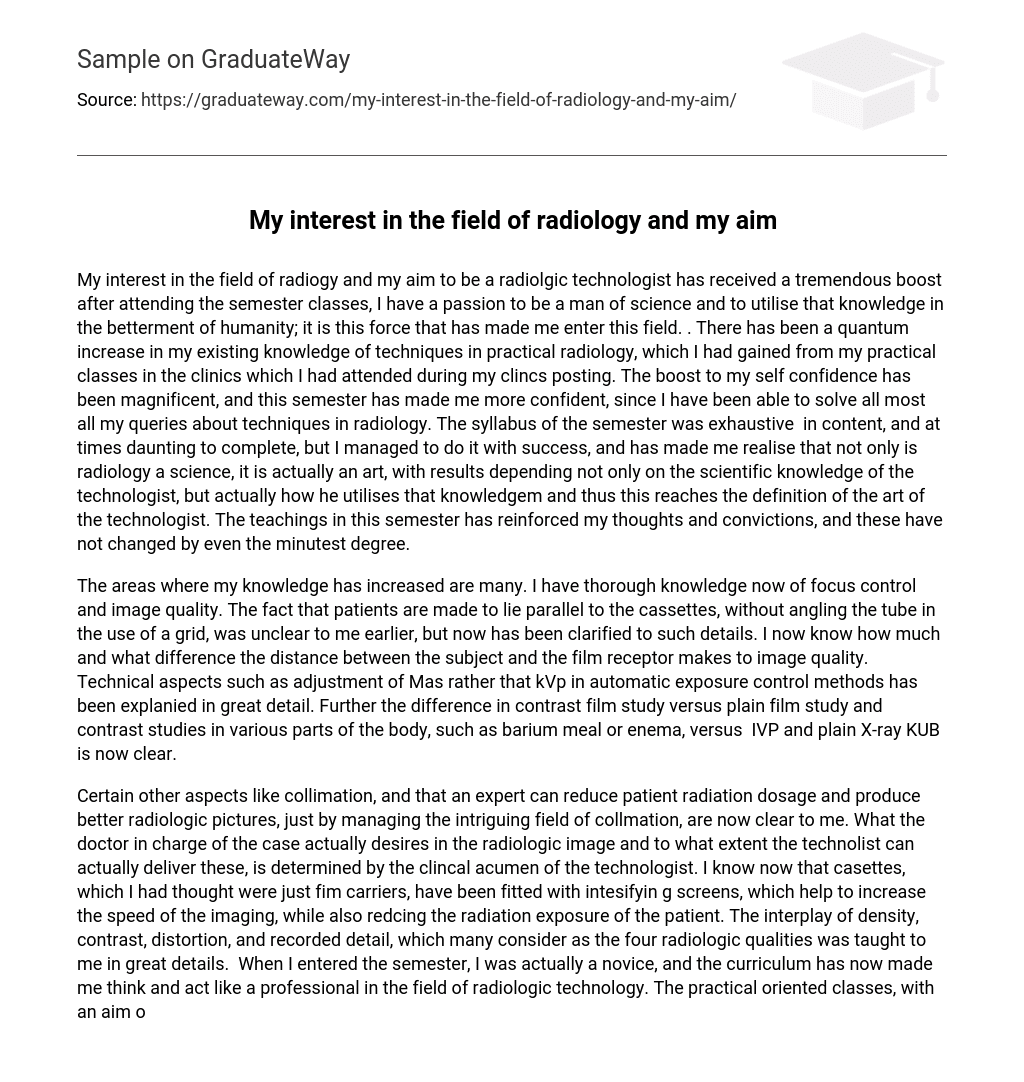My interest in the field of radiogy and my aim to be a radiolgic technologist has received a tremendous boost after attending the semester classes, I have a passion to be a man of science and to utilise that knowledge in the betterment of humanity; it is this force that has made me enter this field. . There has been a quantum increase in my existing knowledge of techniques in practical radiology, which I had gained from my practical classes in the clinics which I had attended during my clincs posting. The boost to my self confidence has been magnificent, and this semester has made me more confident, since I have been able to solve all most all my queries about techniques in radiology. The syllabus of the semester was exhaustive in content, and at times daunting to complete, but I managed to do it with success, and has made me realise that not only is radiology a science, it is actually an art, with results depending not only on the scientific knowledge of the technologist, but actually how he utilises that knowledgem and thus this reaches the definition of the art of the technologist. The teachings in this semester has reinforced my thoughts and convictions, and these have not changed by even the minutest degree.
The areas where my knowledge has increased are many. I have thorough knowledge now of focus control and image quality. The fact that patients are made to lie parallel to the cassettes, without angling the tube in the use of a grid, was unclear to me earlier, but now has been clarified to such details. I now know how much and what difference the distance between the subject and the film receptor makes to image quality. Technical aspects such as adjustment of Mas rather that kVp in automatic exposure control methods has been explanied in great detail. Further the difference in contrast film study versus plain film study and contrast studies in various parts of the body, such as barium meal or enema, versus IVP and plain X-ray KUB is now clear.
Certain other aspects like collimation, and that an expert can reduce patient radiation dosage and produce better radiologic pictures, just by managing the intriguing field of collmation, are now clear to me. What the doctor in charge of the case actually desires in the radiologic image and to what extent the technolist can actually deliver these, is determined by the clincal acumen of the technologist. I know now that casettes, which I had thought were just fim carriers, have been fitted with intesifyin g screens, which help to increase the speed of the imaging, while also redcing the radiation exposure of the patient. The interplay of density, contrast, distortion, and recorded detail, which many consider as the four radiologic qualities was taught to me in great details. When I entered the semester, I was actually a novice, and the curriculum has now made me think and act like a professional in the field of radiologic technology. The practical oriented classes, with an aim of eventual clincal correlation has allowed to now to believe in mysef, and feel confident that I can now face the difficult clinical situations in the hospital. The challenging field of radiolgic technology, has now been made interesting by the professoinal manner in which the curriculum in this semester was covered, and it was indeed a goal oriented teaching.
In depth knowledge of all vasic technical factors is a must to become competent in this field. The physics behind the production of x-rays needs to be understood, as also the history behind the discovery of the phenomena. These classes have given me a broad concept of all these, and now it is my turn to convert some of these bits of information into in depth knowledge. An expert technologist is nothing less than artist, for so much depends on the quality of the finished film. I know, that more knowledge transllates itself into better confidence, with resultant better patient mangement, which is the ultimate aim of any medical personnel.





